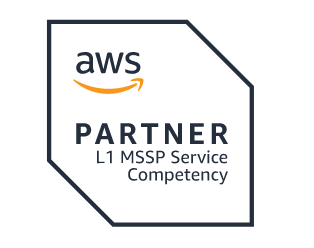Kubernetes Opens Doors For Secure Innovation In Healthcare
Originally published November 5, 2018 by Matt Ferrari, Co-Founder & Former CTO, ClearDATA at forbes.com
Technological advances are reshaping the healthcare industry, putting providers in a unique position to transform the way patient data, communications and care are stored and managed. Technologies like digital and cloud solutions open new avenues and a plethora of possibilities; however, there remains tremendous apprehension with some of the data security and compliance concerns that come along with them. At a time when health care breaches are worse than credit card breaches, health care organizations tend to view innovative approaches with caution.
One innovative technology is containers, which is gaining traction as a solution to help deploy and manage applications safely and efficiently. In fact, Gartner estimates that over 50% of enterprise workloads will run on containers by 2020, up from less than 20% today. Containers virtualize operating systems rather than hardware, enabling applications to run in isolated environments. This makes it easy to move, modify and deploy applications since other applications aren’t affected. And while containers have existed for many years, having a fully managed way to deploy containers in the cloud, specifically with the ability to transmit protected health information (PHI), is new.
That’s where Kubernetes comes in. Kubernetes is an open source platform that gives system administrators much more control over their container environment and automates many processes. The common approach is to package the different services levels that make up an application into separate containers. Users can then deploy those containers across a cluster of physical or virtual machines. Kubernetes is a container orchestration tool that can schedule and automate the deployment, management, scaling, networking and availability of container-based applications. With the ability to automate application testing and deployment, health care organizations can reduce time to market and offer more transparency into production pipelines.
What does this mean in the health care space?
Greater Security
By utilizing container technology, many health care organizations are able to avoid traditional security challenges like operating system level patches and malware. Instead, each time they deploy a new version of their application, they destroy the container cluster and redeploy new nodes and clusters in a highly available environment. This allows health care organizations to not have to staff system administrators that are making sure security patches are run, operating systems aren’t out of date and long-standing malware isn’t sitting on the machine.
Faster Application Deployments
One of the largest challenges for health care IT is the time it takes to deploy a new application or expand existing ones. It can take months to negotiate and deploy the infrastructure alone to securely service an application. With Kubernetes, users can dynamically deploy new containers on demand. These can be preloaded with the security and compliance rules specific to the deployment, so no configuration is needed post-deployment. Users simply spin up new container clusters and deploy their code. Now, health care organizations can launch new applications in a fraction of the time.
Continuity
If an application needs to be updated, users simply clone the container and create a new identification tag for it. This shuts off the old container, but it remains in existence, which comes in handy if the user needs a record of what was done or needs to roll back to the older version if something goes wrong. When a change like this takes place, system downtime — a huge pain point in the health care space — is eliminated altogether.
Lower Costs
With Kubernetes, operating systems and software licenses do not reside in the public cloud amidst unused space. Since deploying a new container shuts off the old one without any downtime, your environment isn’t expanding unnecessarily. And when you consider how lightweight the containers are in comparison to individual virtual machines with an operating system for each environment, the cost savings can be significant.
A Self-Remedying Environment
When Kubernetes is set up to be configured in a certain state, it doesn’t only take action to ensure that the current state matches the desired state. It also continuously ensures that it stays that way as time passes. If, for example, a user sets up three replicas of a certain application, Kubernetes would not only create three replicas, but it will also continuously ensure that there are exactly three replicas. If one is faulty, Kubernetes will automatically replace it and transfer the application to a new container. The faulty container is also unusable and won’t impact other applications until deemed otherwise. Dealing with application failure is a huge pain point for health care IT professionals. When this happens, they have to manually log in to resolve the issue, restart services and troubleshoot the database. These processes consume a great deal of time and resources, potentially impacting the quality of patient care.
Scalability
Kubernetes allows users to set provisions for ramping applications up and down based on demand. By balancing incoming loads better, organizations can make better use of their physical resources. It also eliminates the need for manual intervention entirely, boosting productivity for health care IT teams.
The implications of this type of technology are tremendous for health care organizations. Users can shift their focus from implementing and maintaining applications to focus instead on how they want the applications to run, with specific security and compliance standards in mind. These types of efficiencies are critical in order to move forward with scalability and keep pace with innovation in the industry — without sacrificing privacy, security and compliance.


